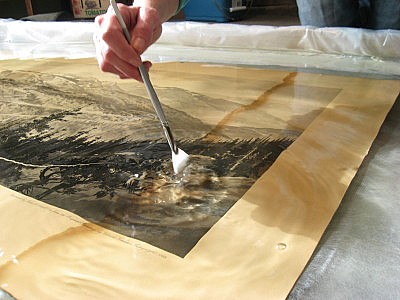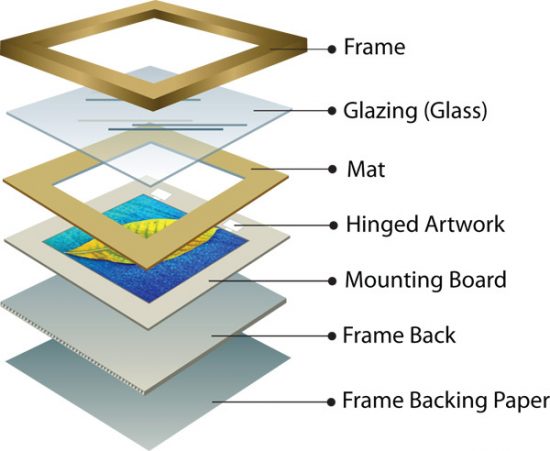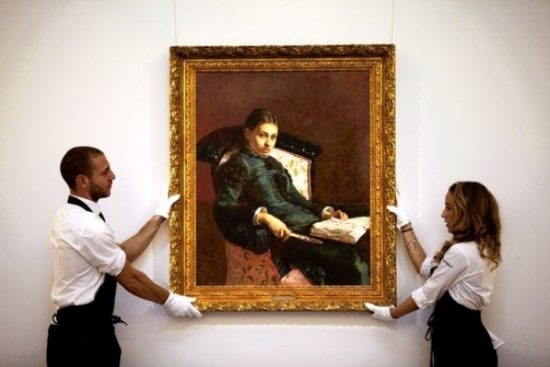
Paper conservation is the preservation of a wide range of rare and valuable objects that are paper-based. The paper objects, due to their vulnerability, must be cared for properly to ensure their appreciation and value for decades to come. Such vulnerability comes from the chemical change that occurs through cellulose deterioration that is caused by light, humidity and air pollutants, as well as contact with harmful materials such as some pressure sensitive tapes. Deterioration can also occur through the improper handling of the objects and biologically via exposure to active mold spores.
In determining how to conserve the paper that has been damaged, conservationists have three main categories that the damage can fit under. They consist of Fixable, Fixable to a Degree, and Not Fixable. All of which are dependent on the complexity of the restoration, which in turn corresponds to cost as well results.
The first category explained will be Fixable which includes wet mounting, dry mounting, and tape/hinge removal, all of which when done wrong, or simply through age leaves residue that effects the chemical change of the paper. All of which is explained in the article What is “museum archival framing”?. However, as a brief recap, wet mounting is artwork that is glued to another surface. Dry mounting is liquefied dry mount tissue that causes the work of art to bond with another sheet of paper. Lastly, tape or hinge removal is due to the excessive use of hinges/tape that attach the art to its current mount.
The second category of paper conservation is Fixable to a Degree. This classification consists of treatments that may or may not result in a “good as new” appearance, which is caused by discoloration. There are six types of discoloration which include foxing, tideline, mat burning, toning, light staining, and tape/hinge staining, Foxing is brought on by metal salts resident in paper, which could be due to fungus/or mold. Tideline is caused by water polling on the surface of an artwork. Mat burning is evident of thin, dark lines, nearest the cut edge of an acidic mat board. Toning is discoloration due to fumes emanating from acidic material. Light Staining is caused by the penetration of UV light on unprotected paper. Lastly, tape or hinge staining is darkened areas left by tape, hinges, or glues as discussed in the paragraph above. Tears, holes, or abrasions to the papers surface are also classified as fixable to a degree depending on the size and complexity.
The last category of paper conservation is Not Fixable , which means it is unwise to fix the surface of the paper. This includes faded pigments and abrasions to screen-print inks which if fixed leave a permanent residue on the work is discernable through UV illumination and could possible alter the value of the work if done poorly.
The conservationist we trust with our art is Diane Jeffrey of Studio Conservation Inc.. Masterworks Fine Art has been using Diane for years to inspect and guide our decisions concerning the potential problems of a piece. She has been an instrumental aid in our success as a business and offers over 25 services designed to preserve and conserve not just original works of art, but paper, posters, and other collectibles as well. Please feel free to view her website at http://www.atstudioc.com to see what she can do for your conservation needs as she is the only one we trust for ours, or you may contact her directly at (800) 583-8379 for any inquiries.
Another great resource is the American Institute of Conservation, which offers articles, and a directory. This particular resource is more informative than this article for those of you looking to possibly have work conserved or wonder what kinds of misfortune can fall upon your art investments if you do not properly care for them.




